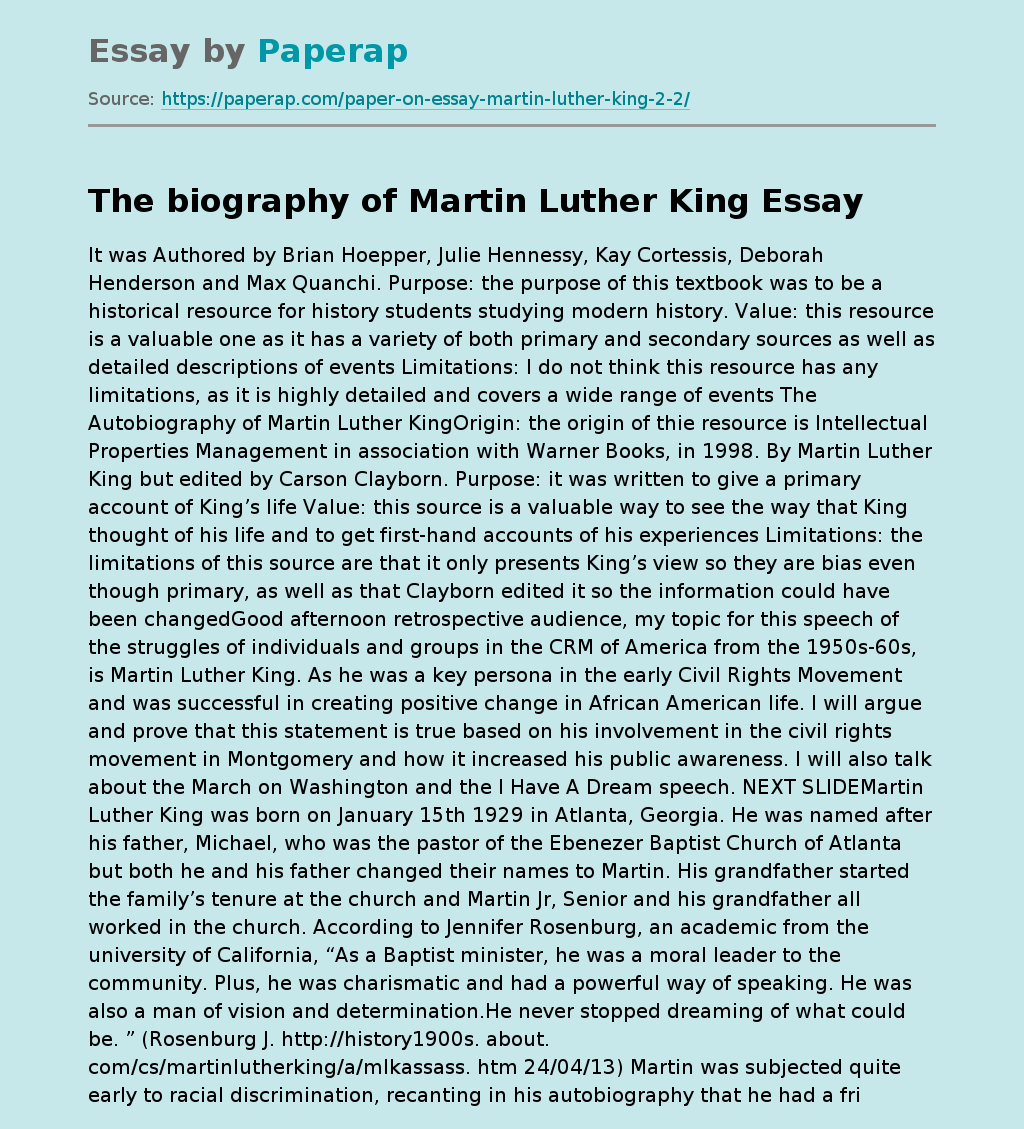The Biography Of Martin Luther King
Martin Luther King was born on January 15th 1929 in Atlanta, Georgia. He was named after his father, Michael, who was the pastor of the Ebenezer Baptist Church of Atlanta but both he and his father changed their names to Martin. His grandfather started the family’s tenure at the church and Martin Jr, Senior and his grandfather all worked in the church. According to Jennifer Rosenburg, an academic from the university of California, “As a Baptist minister, he was a moral leader to the community.
Plus, he was charismatic and had a powerful way of speaking. He was also a man of vision and determination.He never stopped dreaming of what could be”.
Martin was subjected quite early to racial discrimination, recanting in his autobiography that he had a friend at the age of six with whom he used to play with but was told that he was no longer allowed to play with the friend on account of his being black and the friend being white.
This was the first time, according to King, that he had ever been close to any racial issues, “I had never been conscious of it before… I was greatly shocked”. From then on Martin was at war with himself, wanting to hate the white man for the discrimination but being told by his parents that it was his duty as a Christian to love him.
The Montgomery Bus Boycott was not only of importance to King in growing the public’s awareness of ending African American injustice, but also because of an incident that had happened to him when he was younger.
While in higher education, King took part in an Oratorical competition after which he and a close African American teacher, Mrs. Bradley, were seated on the way back to Atlanta when two white passengers boarded the bus and the driver demanded that they move. They had not moved fast enough to suit the driver who began cursing at them. “it was the angriest I have ever been in my life” – King.
So when he was working as a pastor in Montgomery and talks of a bus boycott emerged, King was eager to join the effort as he was able to connect with Rosa Parks’ story. He actively joined the campaign, which was said to be the birthplace and was the first mass action of the CRM. Montgomery had a city ordinance preventing blacks from sitting with the whites on city busses and required them to move if they were already sitting and a white person wanted their seat.
On Thursday December 1st 1955, a 42 year old seamstress named Rosa Parks, while on her ay home from work, was told to move from her chair. She did not move, and was consequently jailed for her disobedience of the state law. When King gave his speech on December 5th 1955, it marked the start of the one day boycott of the cities busses. Where the African American people, who comprised about 75% of bus users, would not travel on the bus. The success of the one day boycott sparked another that would go on for 382 days and along with Rosa Parks, Martin Luther King, was seen as a figure head of this movement. The Demands of the Boycotters were 3 seemingly harmless things to us now:
- The courteous treatment of clack passengers from white drivers.
- The seating of all passengers on a first-come first-served basis.
- The employment of black drivers in predominantly black neighbourhood.
But to the bus owners, they were seen as a way to demean the white people to a lower class.
King recounted of an oratorical competition he competed in in his higher studies, where he presented a speech on “The Negro and the Constitution” which he went on to win, which was the first time he’d ever publicly spoken on African American rights.He argued that, “If freedom is good for any it is good for all”.
The way King spoke captured the attention of the judges as they could not believe how persuasive he, as a younger black man, was at arguing the rights of African Americans. His use of repetition and reference to the constitution and its amendments made him impressively more persuasive. And when he later became president of the Montgomery Improvement Association (MIA) he delivered his speech on Holt Street on December 5th 1955, everybody was convinced that he went from being a “run of the mill black preacher… to a flame that would run across America”.
The March on Washington was a combined, coordinated and non-violent ‘attack’ on the American Government. Where around 250,000 people, both African American and White alike, were present in support for the cause that all joined together in front of the Lincoln Memorial to support the cause.
The Biography Of Martin Luther King. (2019, Jun 20). Retrieved from https://paperap.com/paper-on-essay-martin-luther-king-2-2/

